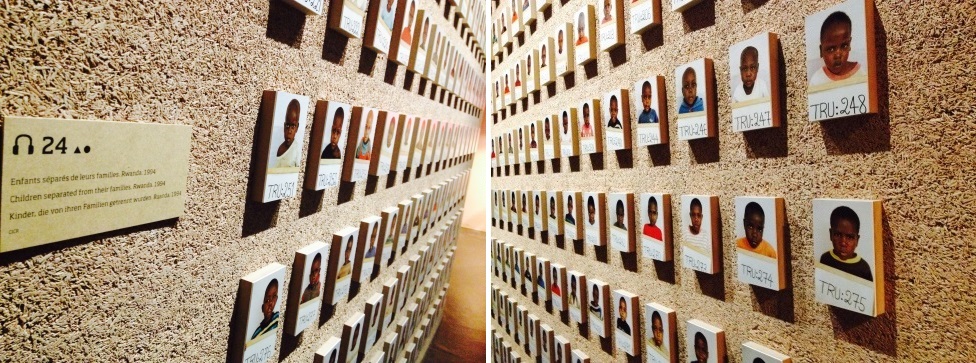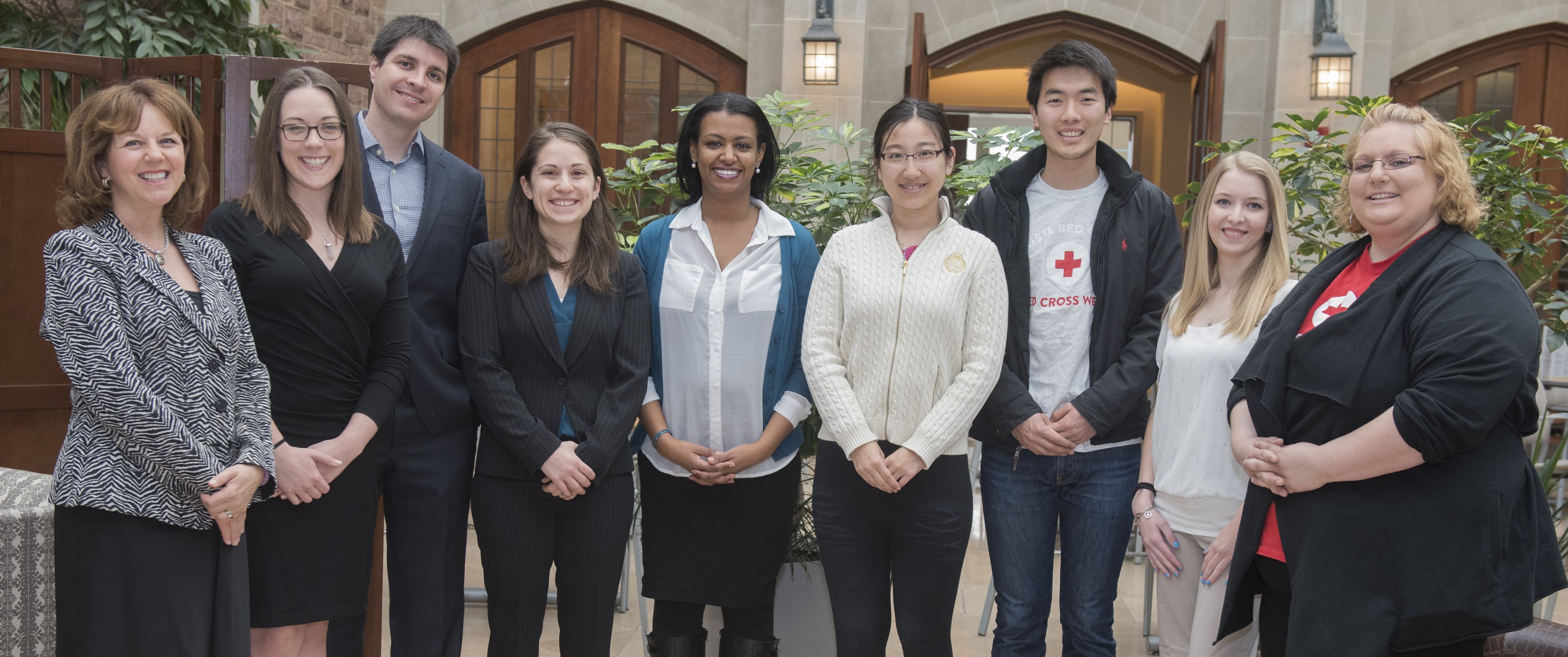By: Bethel Mandefro
When I visited the International Committee of the Red Cross (ICRC) museum during a 2014 trip to Geneva, I was inspired by the century-long history of a unique organization that provides a wide range of critical services both in times of peace and war. Like many people, I was familiar with the Red Cross’ disaster relief and other programs but knew little of its significant role in forming what we know today as international humanitarian law (IHL). The services and principles the ICRC stands for remain vital as the nature of warfare changes and civilians continue to be caught in the middle of armed conflict.

Among the services the Red Cross provides is linking families who are separated during war. (Photograph taken at the ICRC Museum)
Henri Dunant’s revolutionary idea in 1862 of having a set of rules that “limit the effects of war” gave birth to the establishment of the ICRC—a neutral, independent body of helpers who could provide protection and care for wounded combatants, regardless of side. Its many national societies, like the American Red Cross founded by Clara Barton, carry out this objective across every country.
In April 2016, the American Red Cross Humanitarian Law Unit’s Legal Advisor Federico Schwank and Program Advisor Chelsea Zimmerman led an engaging workshop on IHL at Washington University. The full-day workshop enabled students, lawyers, and other professionals to learn key concepts in IHL and understand when IHL is applicable.
International humanitarian law aims to limit the effects of armed conflict by protecting persons who are not or are no longer participating in the hostilities, and by restricting the means and methods of warfare. These objectives were enshrined in the first Geneva Convention and subsequent Conventions and Additional Protocols.
Through interactive media and a series of exercises, participants also learned to identify types of armed conflicts—international armed conflicts (IAC) or non-international armed conflicts (NIAC) —and distinguish between civilians and combatants. Correctly identifying the type of armed conflict (IAC or NIAC) and status of persons (civilian or combatant) is critical because it determines the protections, privileges, and obligations that are applicable under IHL. For example, IHL’s Special Protections for Civilian Objects such as hospitals, religious and cultural sites has allowed such institutions to serve as a place of refuge in times of war.
| Four core principles of IHL:
1) “Distinction” requires that “parties to the conflict shall at all times distinguish between the civilian population and combatants and between civilian objects and military objectives and…direct their operations only against military objectives;” 2) “Military necessity” allows combatants to engage in acts of war to secure the complete submission of the enemy as long as these acts are not in violation of IHL; 3) “Proportionality” requires parties to refrain from engaging in attacks that may cause excessive loss of civilian life, injuries and damage to civilians and civilian objects in relation to the concrete and direct military advantage anticipated; and 4) “Prevention of unnecessary suffering or humanity” is the counterbalance to military necessity and prohibits the employment of “weapons… methods of warfare of a nature to cause superfluous injury or unnecessary suffering” of combatants. |
Despite these well-established principles of IHL, however, there have been numerous attacks on hospitals and other civilian persons or objects in war-torn countries such as Syria, Afghanistan and Yemen. The frequency of recent IHL violations leaves one to wonder what, if any, enforcement mechanisms are in place to uphold IHL and honor the laws of war (jus in bello).
Professor Leila Sadat closed out the training with an introduction to to some of the enforcement mechanisms that exist within the realm of international criminal law. These include hundreds of international conventions and treaties [maybe bookmark to this slide] whose core provisions include the obligation to penalize, investigate and prosecute or extradite violators of IHL. While the ultimate responsibility to carry out these obligations lies with governments, international organizations such as the ICRC and civil society remain the critical bearers of international humanitarian law.


